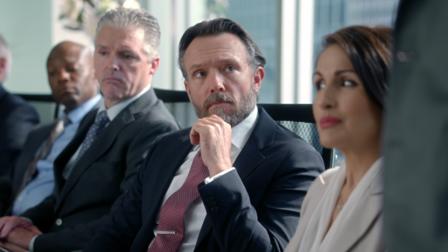Rubik’s Cube in Counseling
 Training, as a tool, relates to training counseling. From the point of view of the subject of counseling, it is aimed at solving the problem set by the client. The object of counseling is a person, more precisely, a group of persons. The ideology of the training approach is based on the fact that the person is the main actor of the organization and, accordingly, his problem can be solved through his training. At the same time, the client, in most cases, determines the “place” that requires treatment, assuming that he is supposed to know better. Thus, the client’s problem is considered “pointwise” – where it hurts, it is treated there, without going into an analysis of the causes of such pain. For example, a company wants to be helped to develop a strategy; accordingly, training on strategy is provided. Or there is a client’s desire to increase sales, then training is conducted on relevant topics. In other words, the topic of training is, as a rule, the customer’s understanding of the existing bottlenecks in his organization. Specifying “as a rule” indicates frequent cases where a client is “brought to the needs” of a particular training, regardless of whether the company really needs it or not.
Training, as a tool, relates to training counseling. From the point of view of the subject of counseling, it is aimed at solving the problem set by the client. The object of counseling is a person, more precisely, a group of persons. The ideology of the training approach is based on the fact that the person is the main actor of the organization and, accordingly, his problem can be solved through his training. At the same time, the client, in most cases, determines the “place” that requires treatment, assuming that he is supposed to know better. Thus, the client’s problem is considered “pointwise” – where it hurts, it is treated there, without going into an analysis of the causes of such pain. For example, a company wants to be helped to develop a strategy; accordingly, training on strategy is provided. Or there is a client’s desire to increase sales, then training is conducted on relevant topics. In other words, the topic of training is, as a rule, the customer’s understanding of the existing bottlenecks in his organization. Specifying “as a rule” indicates frequent cases where a client is “brought to the needs” of a particular training, regardless of whether the company really needs it or not.
On the one hand, the “pointness” of this tool can speak of a significant plus, if we mean the concentration of efforts in solving the set task. On the other hand, it is precisely the “punctuality” of the strike that harbors serious shortcomings. The fact is that the recruitment of the most talented people and those who are trained in new-fangled managerial trends can represent a completely helpless organization if it does not implement mechanisms aimed at ensuring, maintaining and developing organizational order.
Therefore, we can talk about three significant limitations of the training approach. The first and key one is precisely the “precision” of the problem being solved, which most often leads to an unbalance of the organization. The distortion between various functional areas in turn entails either the failure to achieve the desired result, or the impossibility to realize the result of the training due to inconsistencies with other elements of the intraorganizational process. After all, “improving the work of one of the elements does not lead to an improvement in the functioning of the system as a whole,” as Beer’s law says, which concerned mechanics, but is also fully true in management. Therefore, some positive changes will take place exclusively in the short term. The second limitation is precisely the short-term improvements, which leads to a direct dependence of the company on training, which is why their frequency and subject matter often go beyond all reasonable limits. The company begins to resemble a “trishkin caftan” – patched one direction, as “tears” in another. Therefore, it is immediately necessary to take up the patching of other interconnected directions. And so on to infinity. And this leads not only to dependence on this tool of counseling, but also to the unreasonable use of time and money. That’s for sure, the miser pays not that twice, but simply repeatedly.
The third limitation is related to the fact that it is pleasant for managers to realize this or not, but more often, for a variety of reasons, which will be discussed below, the struggle with organizational problems in their companies concerns the symptoms lying on the surface rather than the problems causing them. This restriction has enough prosaic roots. As a rule, this is a false confidence of managers that no one knows better than them about the existing problems in the organization they lead. However, in most cases, it is possible to assert something else – the owner of the business and the manager are the most uninformed people in their own companies. This happens due to the refraction of goals at different levels of management, distortion of the information provided to them, including for reasons of manipulation, low competence, avoiding responsibility, etc. The received basic education of a manager also imposes certain ideas about how “it should be”. And based on these ideas, the myths and stereotypes prevailing in the organization only aggravate the situation.
In turn, the desire of managers to find a “magic wand” or a “miracle pill” from all managerial ills that supposedly can instantly improve the situation in a company leads not only to self-deception. Unconscious and unreasonable demand for training leads to two negative points. First, the number of training topics has long exceeded the list of managerial tasks that can be solved only through training. Secondly, many people have the impression that the money in the consulting market simply falls from the sky. And this already leads to the appearance of less and less trained trainers who really spoil the reputation, usefulness and possibilities of trainings in particular, and consulting services in general.




